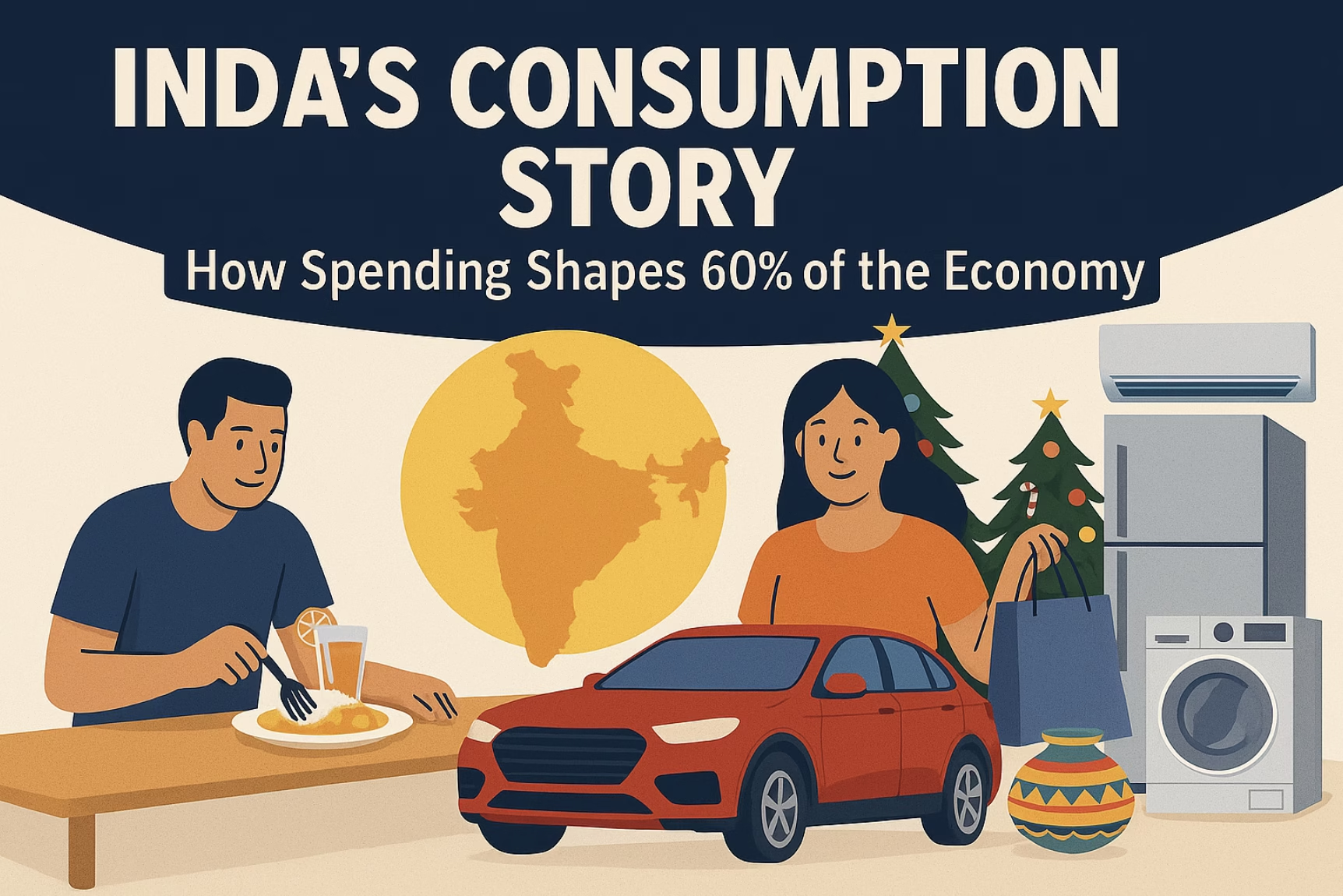If you want to understand the Indian economy you have to ask one of the most important questions is how much Indians are consuming?
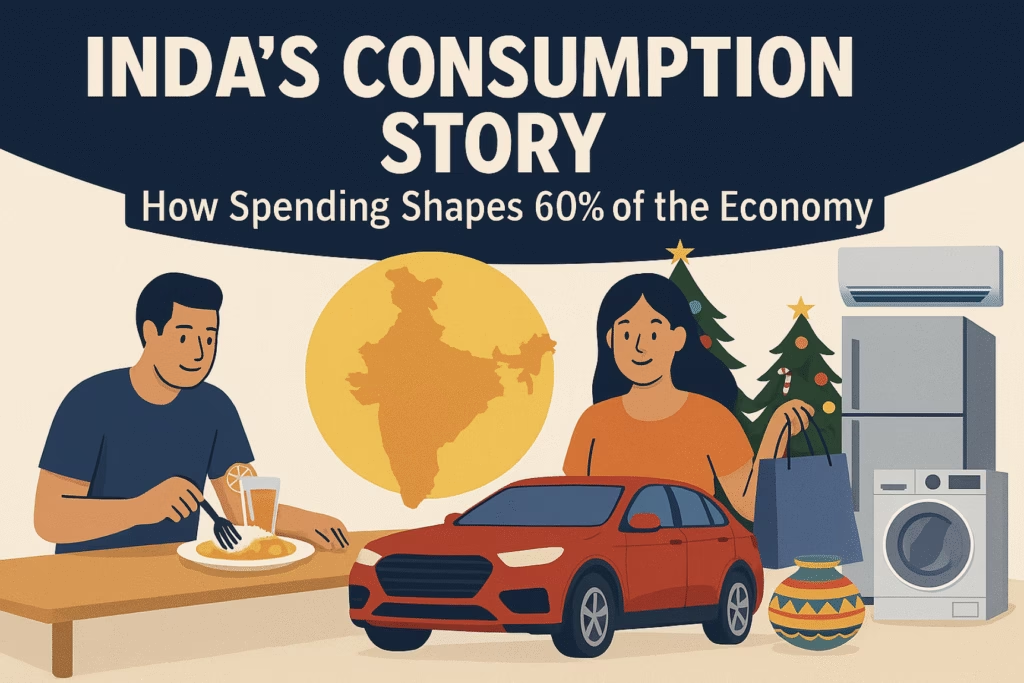
At first glance when you hear the economy word you would think this is so complicated, abstract and hard to understand. We hear about foreign companies are setting billion dollar factories in India or Indian companies expanding their capacity, government announcing a lot of infrastructure projects, these things grab attention and make headlines in news but this is not the whole story about economy.
Economy is much simpler than this, means how much money is floating from each other people. When you go to a restaurant you pay the bill that bill goes to owner pocket. He spends that money in buying groceries, paying salaries and even buying new car. The employees who get spend that money on food, rent and travelling. The car dealer who earn money pay the salary to staff and supplier and so on. This continuous cycle of money from one person to another person is called consumption spending, and in India it accounts 60% of the economy. The more people spend money economy will grow at faster rate that’s why how much Indians are consuming is important.
Festive season and GST rate cut
92% Indians are planning to maintain or increase their festive season spending. With an average budget of ₹16,500, this is not just good news it is a clear sign of increasing confidence of consumers. And in the Independence Day speech Prime Minister Narendra Modi announced they are going to do simple GST rate 5% to 18% on items like packaged foods, appliances, and small cars are expected to increase demand during festive season. Expect a surge in discretionary spending in festive season this is best time for brands to attract consumer.
But now what people of India think ?
There are not a perfect way to measuring consumption. In India there are two India first is rural and second one is urban we will take a look at RBI’s rural and urban confidence surveys. In this survey RBI asks people how they feel about economy, jobs and spending. Through this RBI tries to understand what people are thinking. And it compares by last 12 months from now and next 12 months from now. This data are boiled down in two ratio “Current Situation Index (CSI)” and “Future Expectations Index” (FEI). It will measure by taking 100 as base value if in ratio is below 100 then consumers are cautious but if ratio is above 100 then people are optimistic.
As per latest survey rural Indians are slightly optimistic in CSI of 100.6 but in FEI of 127.7 they are hopeful and optimistic for the future.
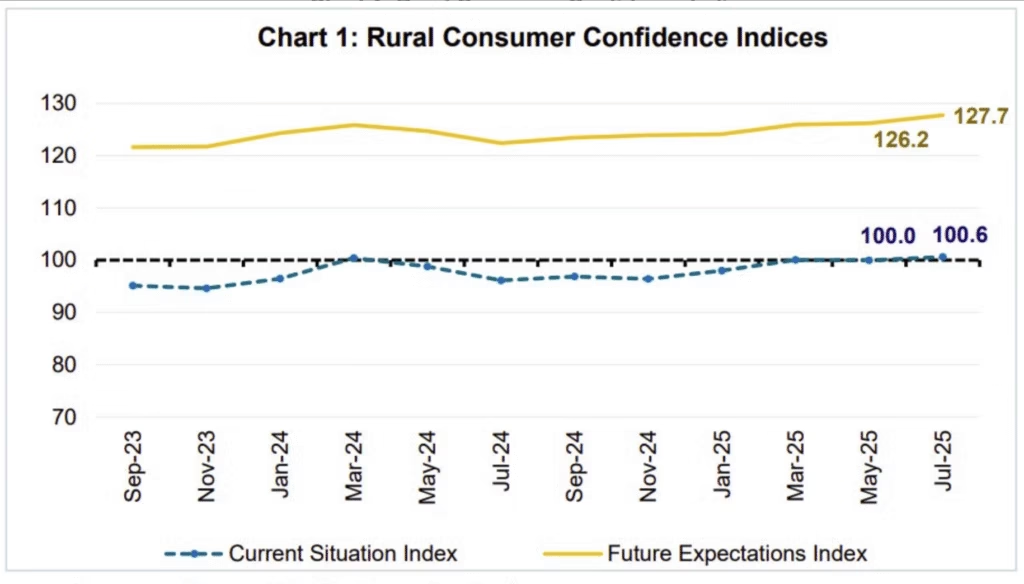
Cities are telling us different stories
Urban India CSI is below 100 mark at 96.5, in short people are disappointed by their current situation, they are hopeful for future the FEI is 124.7 but life is not great for urban people they are spending money, in fact they are buying expensive things or luxury items but they are continuously in threat of losing jobs.
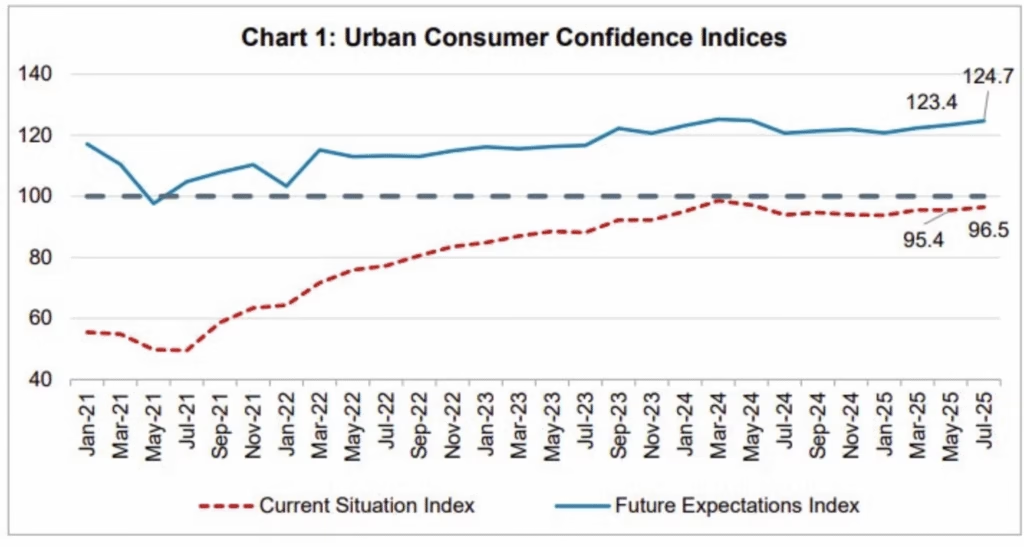
From above ratio we get a understanding that rural India is more confident and optimistic about their future or for their current situation.
The monsoon changed everything
This year monsoon came in May instead of in June it will affect lot of business this one month change businesses plans.
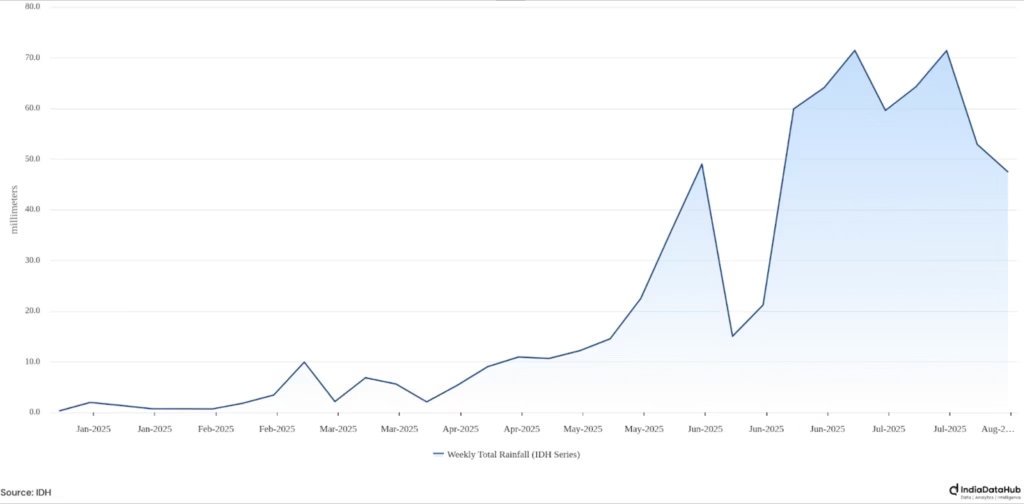
SOURCES
In most years April and May are the hottest months temperature hit 40 to 45 degree Celsius, everyone use cooler, AC and fans for 24/7. companies plan their business accordingly power plants are ready to supply higher demand, appliance stores stock up coolers, AC and fans and even beverage companies also gear up for heat. But this year it all changed due to monsoon demand is not created that will affects on India’s companies, and the demand shrink it will affect on profitability companies this year.
Rains affect in rural India
At the same time in rural, this is good news especially for rural India. When the rains are good, water tables are full and crops do well. And this bring comfort in agriculture so rains push down food prices at will directly impact on inflation and everyone cost of living drops.
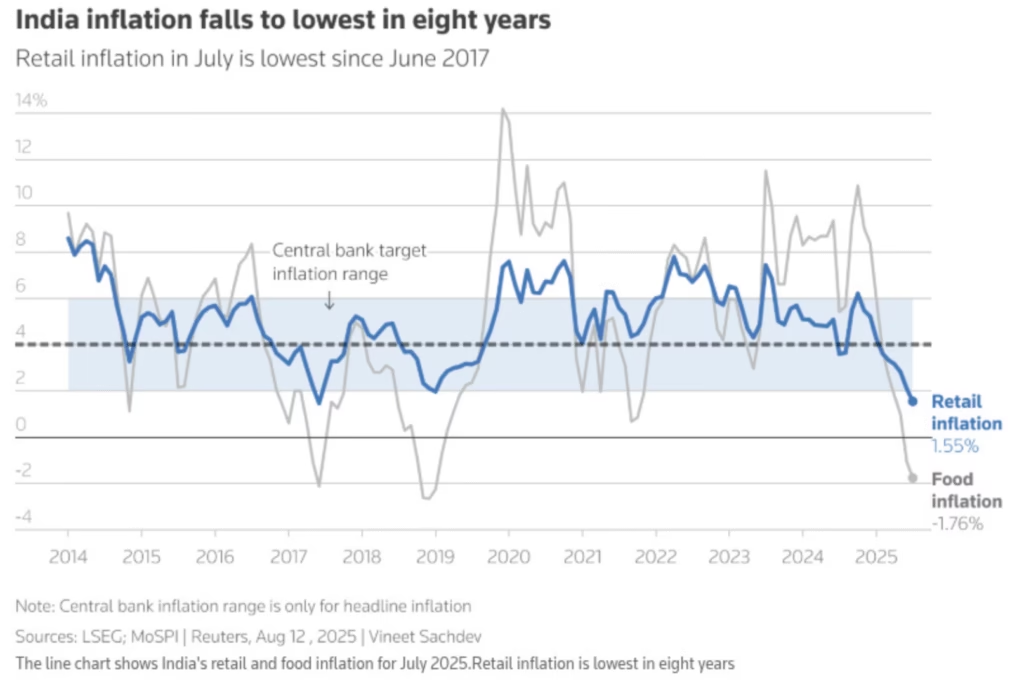
Government also pumping money in rural India by subsidy, MSP and direct transfer. All of this increased the demand in rural India. Although rural India is doing great compare to urban India. In Dabur concall or in Hindustan Unilever concall both management of company are bullish in rural India and in festive season they think urban India demand also came at stable level.
India’s Car Consumption Split
If we want to understand economy we have to understand the car industry of that country. It will give us idea about what economy is doing? When people buy more cars means people have money to purchase the cars and the economy is developing but when people save their money instead of buying cars this means economy is in pressure or it is declining because people don’t have money to spend on discretionary items.
People are shifting their focused towards aspirational cars spending more money on SUV even stretching their budget or taking loan. In rural areas hatchback is demanding but in urban areas SUV demand is increasing. Now government cut GST on small cars it will increase the sales of hatchbacks and affordable cars.
In short in India people are not buying entry level cars that’s why share of Maruti Suzuki is declining or people who buy entry level cars, don’t have enough money to buy affordable cars.
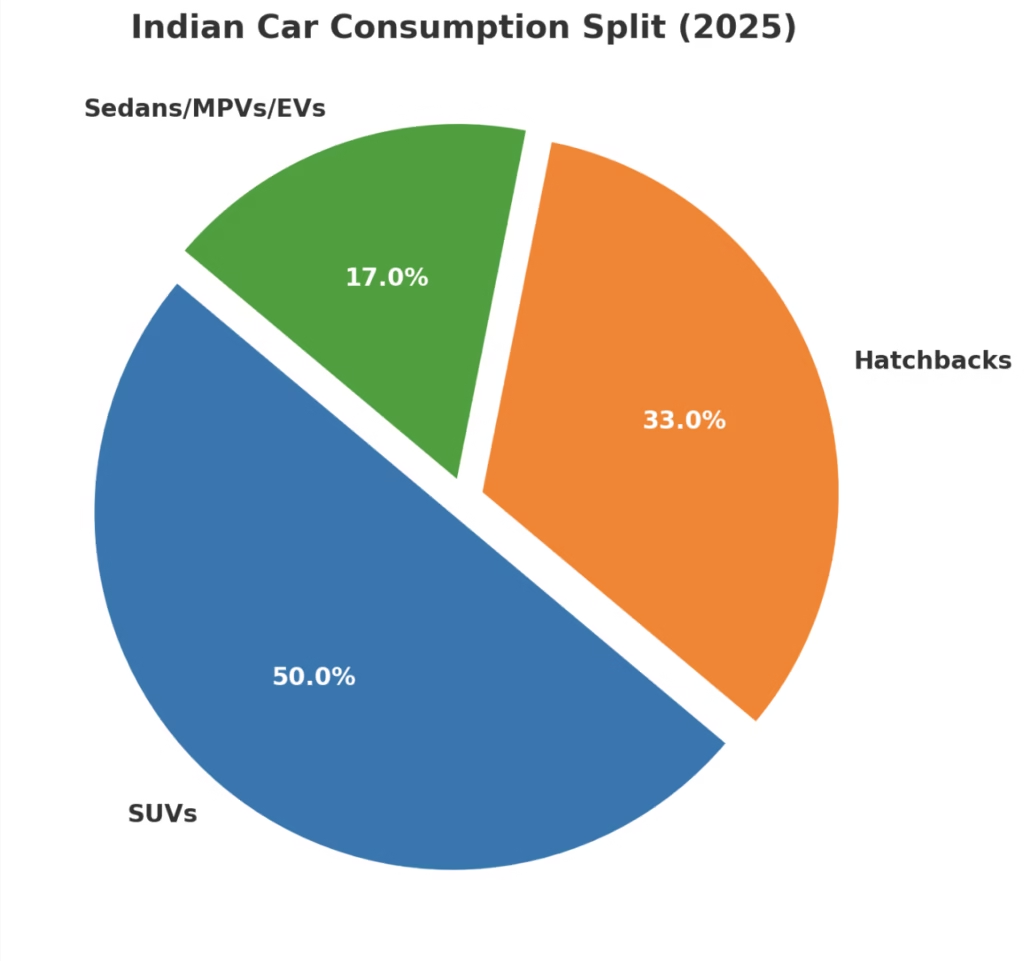
So, in consumption terms Half the cars Indians buy today are SUVs, one-third are hatchbacks, and the rest are split between sedans, MPVs, and emerging EVs.
Final thoughts
Indian consumption story is one of resilience and transition, now rural India driving the growth of Indian economy. Urban India is hopeful for tomorrow and together they will determine how fast our economy will grow.
